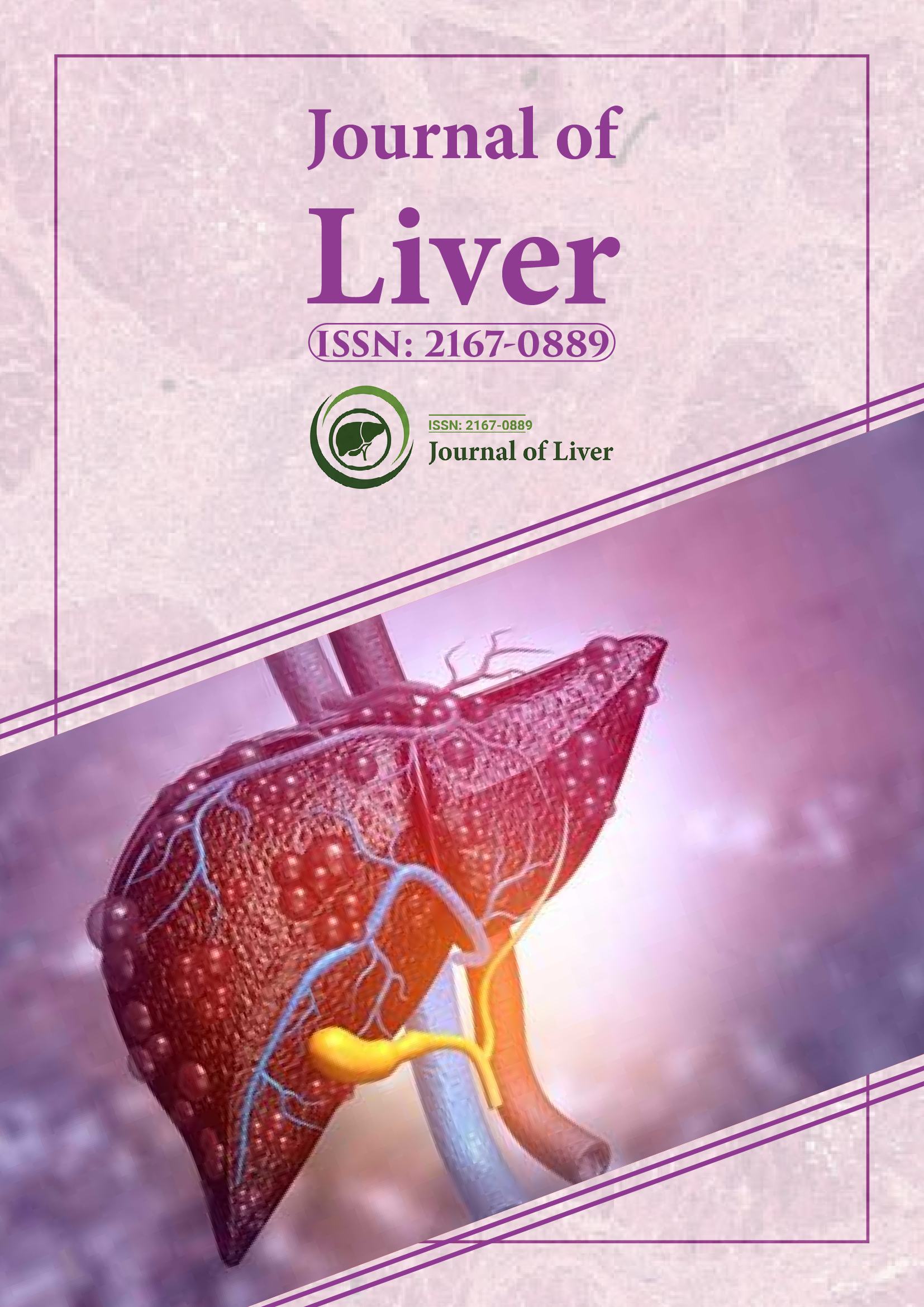Indexed In
- Open J Gate
- Genamics JournalSeek
- Academic Keys
- RefSeek
- Hamdard University
- EBSCO A-Z
- OCLC- WorldCat
- Publons
- Geneva Foundation for Medical Education and Research
- Google Scholar
Useful Links
Share This Page
Journal Flyer

Open Access Journals
- Agri and Aquaculture
- Biochemistry
- Bioinformatics & Systems Biology
- Business & Management
- Chemistry
- Clinical Sciences
- Engineering
- Food & Nutrition
- General Science
- Genetics & Molecular Biology
- Immunology & Microbiology
- Medical Sciences
- Neuroscience & Psychology
- Nursing & Health Care
- Pharmaceutical Sciences
Perspective - (2025) Volume 14, Issue 2
Preclinical models for studying alcoholic liver disease and liver cancer
Nuria Prieto*Received: 26-May-2025, Manuscript No. JLR-25-29526; Editor assigned: 28-May-2025, Pre QC No. JLR-25-29526 (PQ); Reviewed: 11-Jun-2025, QC No. JLR-25-29526; Revised: 18-Jun-2025, Manuscript No. JLR-25-29526 (R); Published: 25-Jun-2025, DOI: 10.35248/2167-0889.25.14.257
Description
Alcoholic Liver Disease (ALD) is one of the most significant health challenges globally, representing a continuum of liver damage caused by long-term ethanol consumption. The disease begins with fatty liver and can progress to steatohepatitis, fibrosis, cirrhosis and Hepatocellular Carcinoma (HCC). This progression is driven by metabolic alterations, oxidative stress, inflammation and fibrosis. Animal models have been extensively developed to replicate these features and to provide mechanistic insights into how ethanol, especially when combined with hepatotoxic agents, induces progressive injury. These models are indispensable for studying disease mechanisms and evaluating new therapeutic interventions. The use of hepatotoxins in combination with ethanol has proven particularly effective in replicating the severity and chronicity of human disease, making them valuable research tools.
Pathophysiology of Alcoholic liver disease
The development of ALD involves multiple, overlapping biological processes that impair hepatic homeostasis. Ethanol metabolism produces acetaldehyde, a highly reactive metabolite capable of binding to cellular macromolecules and inducing toxicity. Cytochrome plays a major role in generating reactive oxygen species, which contribute to oxidative stress and lipid peroxidation. Ethanol also alters lipid metabolism by enhancing lipogenesis and reducing fatty acid oxidation, leading to hepatic steatosis. Chronic exposure stimulates Kupffer cells and activates pro-inflammatory signaling, resulting in cytokine release and infiltration of immune cells. Fibrosis develops as hepatic stellate cells become activated and deposit extracellular matrix proteins. Over years of injury, architectural distortion, nodular regeneration and genomic instability can progress to cirrhosis and cancer.
Ethanol-only models
Rodent models that rely solely on ethanol administration have been central to understanding early stages of ALD. The Lieber-DeCarli liquid diet, which provides ethanol as a percentage of total caloric intake, induces hepatic steatosis and mild inflammatory responses. These models are especially useful for investigating ethanol metabolism and the direct toxic effects of acetaldehyde and oxidative stress. However, ethanol alone rarely leads to advanced fibrosis or tumor formation, limiting the capacity of these models to replicate the full spectrum of human disease. While important for foundational studies, they are best suited for research on initial metabolic disruptions rather than advanced pathology [5].
Ethanol combined with carbon tetrachloride
Carbon Tetrachloride (CClâ??) is a well-known hepatotoxin that induces necrosis and activates fibrogenic pathways. When combined with chronic ethanol feeding, it significantly accelerates fibrosis and cirrhosis. This model mimics human alcoholic steatohepatitis by producing steatosis, hepatocyte necrosis, collagen accumulation and regenerative nodules. Molecular analyses have revealed enhanced oxidative stress, activation of signaling and stellate cell proliferation. Compared to ethanol-only models, the ethanol plus CClâ?? combination provides a more comprehensive platform for studying fibrotic processes and mechanisms of disease progression [6, 7].
Epigenetic and metabolic alterations
Chronic ethanol and hepatotoxin exposure induce widespread changes at the epigenetic and metabolic levels. DNA methylation patterns are altered, histone modifications affect gene transcription and microRNAs such as miR-122 are disrupted, influencing pathways involved in apoptosis, regeneration and lipid metabolism. These changes amplify inflammation, fibrosis and carcinogenesis. Dysregulated bile acid signaling and glucose handling further complicate liver homeostasis. Studying these alterations provides insight into molecular drivers of disease beyond traditional metabolic and inflammatory mechanisms.
Models combining ethanol with hepatotoxic agents remain indispensable tools for understanding the progression of alcoholic liver disease. While ethanol-only models highlight early metabolic injury, combinations with CClâ??, DEN, or acetaminophen replicate more advanced stages, including fibrosis and cancer. Genetic models further clarify how individual susceptibility shapes disease outcomes. Collectively, these experimental approaches illuminate mechanisms ranging from oxidative stress and stellate cell activation to genomic instability and altered signaling networks. Continued refinement of these models, along with integration of molecular and genetic data, will enhance understanding of disease pathogenesis and support the development of strategies to prevent fibrosis and hepatocellular carcinoma in populations at risk.
Citation: Prieto N (2025). Preclinical Models for Studying Alcoholic Liver Disease and Liver Cancer. J Liver. 14:257.
Copyright: © 2025 Prieto N. This is an open-access article distributed under the terms of the Creative Commons Attribution License, which permits unrestricted use, distribution, and reproduction in any medium, provided the original author and source are credited.
